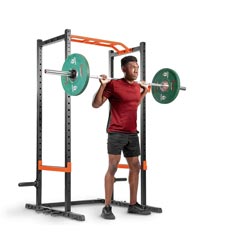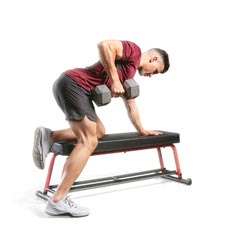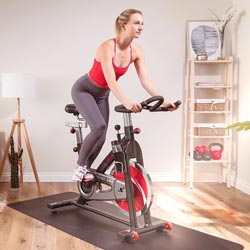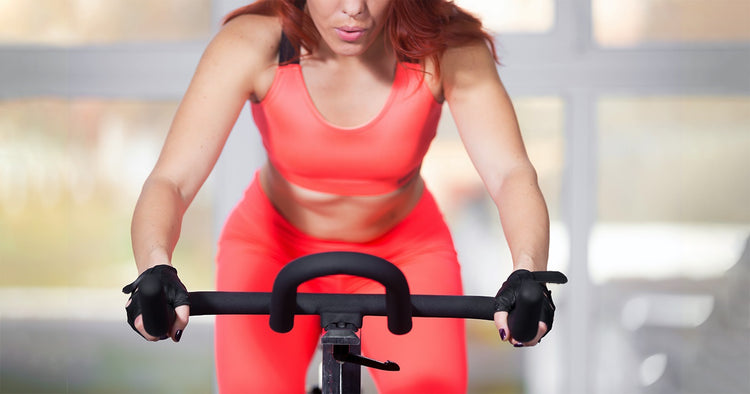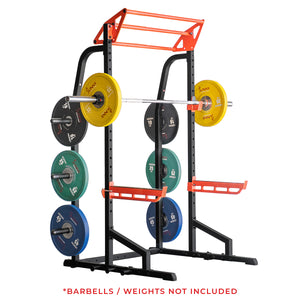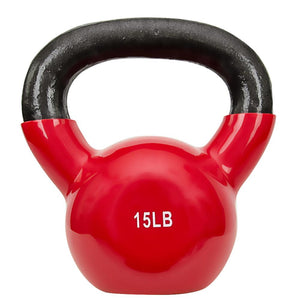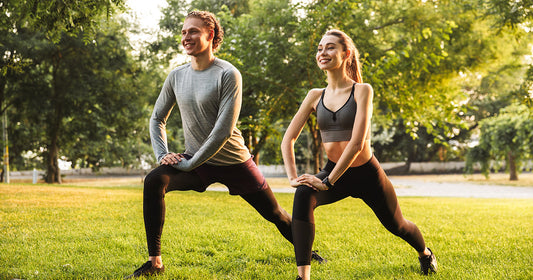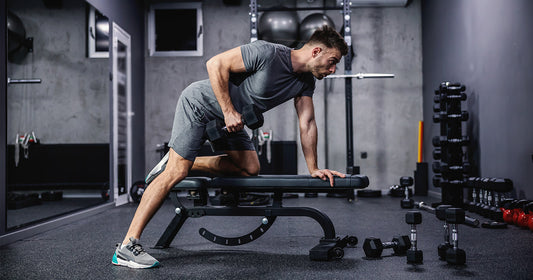It may seem self-evident but breathing during exercise is an important subject. Do it right and you can maximize the benefits of your workouts, reduce stress (1), and increase your cardiorespiratory health. Do it wrong and you’re: (A) making your workouts harder; and (B) increasing your risk of injury.
This simple guide breaks down breathing while you exercise and breathing during workouts in general so you can take advantage of this misunderstood element.
What Exercises Are We Talking About?
There are two main exercise types we need to address. To put it simply, resistance training involves lifting weights in sets and reps, while cardio training refers to running on the treadmill, riding the stationary bike, going HAM on the rower, and other exercises that predominantly get the heart pumping.
Each type involves a specific method of breathing during exercise to obtain the best results, so we will go over each method one at a time.
Breathing During Cardio Exercise
Breathing during cardio exercise is the simpler of the two, so we’ll get that out of the way first.
There are two main types of cardio exercise: Steady-State and High-Intensity Interval Training.
Steady-state cardio, or SS, involves moving at more or less the same speed for an extended period of time. It is what most people think of when they think of “cardio”.
The main thing to remember during SS is you never want to be breathing erratically or breathing so hard that you can’t talk clearly. Breathing in this way usually means you’re going too hard, which can have negative health effects such as overworking your heart and increasing stress. (2)
So, if you’re planning to do SS cardio, start at a pace you can sustain for the full length of time without huffing and puffing.
To optimize this sort of breathing during your exercise, the best place to start is a time-tested protocol called the 2:2 method: breathe in for two steps and out for two steps. (3) (If you’re pedaling, make it 4:4, and if you’re rowing, exhale every time you pull.)
When it comes to breathing through the nose or the mouth, do what feels best in the moment, but don’t be afraid to breathe through your mouth. Doing so can increase the amount of oxygen (4) you take in, thereby allowing you to run harder.
With High-Intensity Interval Training, or HIIT, you will find yourself breathing harder during the high-intensity intervals. It is good to try to control your breathing more during the low-intensity, as this helps heighten the contrast between the high- and low-intensity intervals (which is what makes HIIT effective). So, breathing through your nose during low-intensity and your mouth during high-intensity is okay.
The thing is, eventually you’ll be working so hard, you’ll just breathe through your mouth the entire time, and that’s fine too.
Since you’ll be more winded during your low-intensity exercise, don’t worry about the 2:2 rule (unless you want to). Just try to breathe smoothly and steadily, in and out, before you start back up into your next high-intensity interval.
One quick note: If you’re just starting out with cardio training, it is important that you start with SS and build yourself up to HIIT. Although “harder” can be more effective, it is not always better; if your workout leaves you so exhausted and sore that you can’t exercise for a week afterward, that’s not good.
To employ a metaphor, speeding on the highway will theoretically get you where you want to go more quickly, but it might also lead to an accident which slows you down much more than if you’d just driven the speed limit.
Quick Note: Conditioning
But what is your “speed limit,” in this context? That is what’s called your level of “conditioning,” and since conditioning has so much to do with resistance training, now is a good time to discuss it before we jump into that subject.
Generally, conditioning refers to your body’s ability to effectively transmit oxygen and other nutrients to different parts of the body. It is a measure of how “in shape” a person is, to be able to do a certain type of exercise and not get winded. Being able to do challenging HIIT-style workouts, or sets of twelve on the back squat, or kettlebell swings followed by sled pushes and then burpees, is dependent on having adequate conditioning. And how do you increase conditioning, i.e., your “speed limit” so you can go harder and see more results? You do so by starting small on these exercises and building up from there. Trust me on that!
Now, let’s look at resistance training.
Breathing During Resistance Training
The simplest rule of thumb for breathing during resistance training exercises like bench presses, squats, and pushups, is to “exhale during the effort.” So, when you’re actually pushing the bar upwards during a bench press; when you’re standing up from a squat, or when you’re pulling the weight towards you during a row, THIS is when you exhale. Hence, you inhale immediately before initiating each repetition.
Here is a chart of common resistance training exercises and when you should exhale during each one.
| Exercise | Breathing |
|---|---|
| Bench Press, Overhead Press, Pushup, Dip | EXHALE when pushing |
| Row, Pullup, Pulldown, Pullover | EXHALE when pulling |
| Deltoid Raise, Chest Fly, Triceps Extension, Biceps Curl | EXHALE when raising |
| Sit-up, Crunch, Leg Raise (see “Breathing During Core Exercise” below) | EXHALE when coming up |
| Plank (see “Breathing During Core Exercise” below) | slowly EXHALE while staying tight and then INHALE quickly |
| Deadlift, RDL | EXHALE coming up |
| Squat | EXHALE coming up |
“Exhale During Effort” (EDE) is a tried-and-true method of getting enough oxygen during exercise to improve performance while also stabilizing blood pressure and staying nice and alert with no headrushes or dizziness (always nice during exercise, isn’t it?).
However, there comes a point when this method becomes ineffective, particularly for the bench, squat, deadlift, overhead press, pullup, and even the row. It happens as the weight gets heavier.
The reason is this: when your lungs are full of air, your body is in a tighter, more secure state. This effect is called intra-abdominal pressurization. The air adds a degree of stiffness you wouldn’t otherwise have.
Let’s say you’re squatting with a bar on your back and using the EDE method. This would mean you’re inhaling on the way down and exhaling on the way up. If the weight is rather heavy and you exhale coming up, it means you’re losing some stiffness in your body on the way up, making the lift not only harder but more dangerous.
Conclusion
Breathing during exercise may seem slightly complicated, but when you think about it, is it any more complicated than the movement of countless muscle fibers that allow you to lift a weight?
Just like exercising, eating right, or getting good sleep, learning how to breathe properly during exercise is worth the effort. Give it a try, take it slow, and before you know it, you’ll be breathing with the best of them!
(1) BMJ. (2014). When somebody loses weight, where does the fat go? https://www.bmj.com/content/349/bmj.g7257 Accessed 21 December, 2022.
(2) Gloveworx. (2020). Deep Breathing Exercises to Help You Become Unstoppable. https://www.gloveworx.com/blog/breathing-exercises/ Accessed 21 December, 2022.
(3) Oxygen. (2020). 4 Breathing Tips to Boost Your Cardio. https://www.oxygenmag.com/workouts-for-women/cardio-for-women/4-breathing-tips-to-boost-your-cardio-8544/ Accessed 21 December, 2022.
(4) Triathlete. (2020). Is It Better to Breathe Through Your Mouth or Nose During Exercise?. https://www.triathlete.com/training/should-you-breathe-through-your-mouth-or-nose-during-exercise/ Accessed 21 December, 2022.

Mark Ludas CPT is a NASM-certified personal trainer with a decade of experience in the fitness industry. After an asthmatic childhood, Mark discovered his natural aptitude for fitness in his late twenties. At age 36, he accomplished a 300+ pound conventional deadlift and 280+ high-bar squat as a 6’5” 170-pound ectomorph on a fully vegan diet, all after just one year of proper self-programming. Mark is the founder of Resistance Quest Fitness, established in 2016. Additionally, he is a writer, actor, model, and musician. Find him on Instagram, Facebook, Youtube, and at www.resistancequest.com.
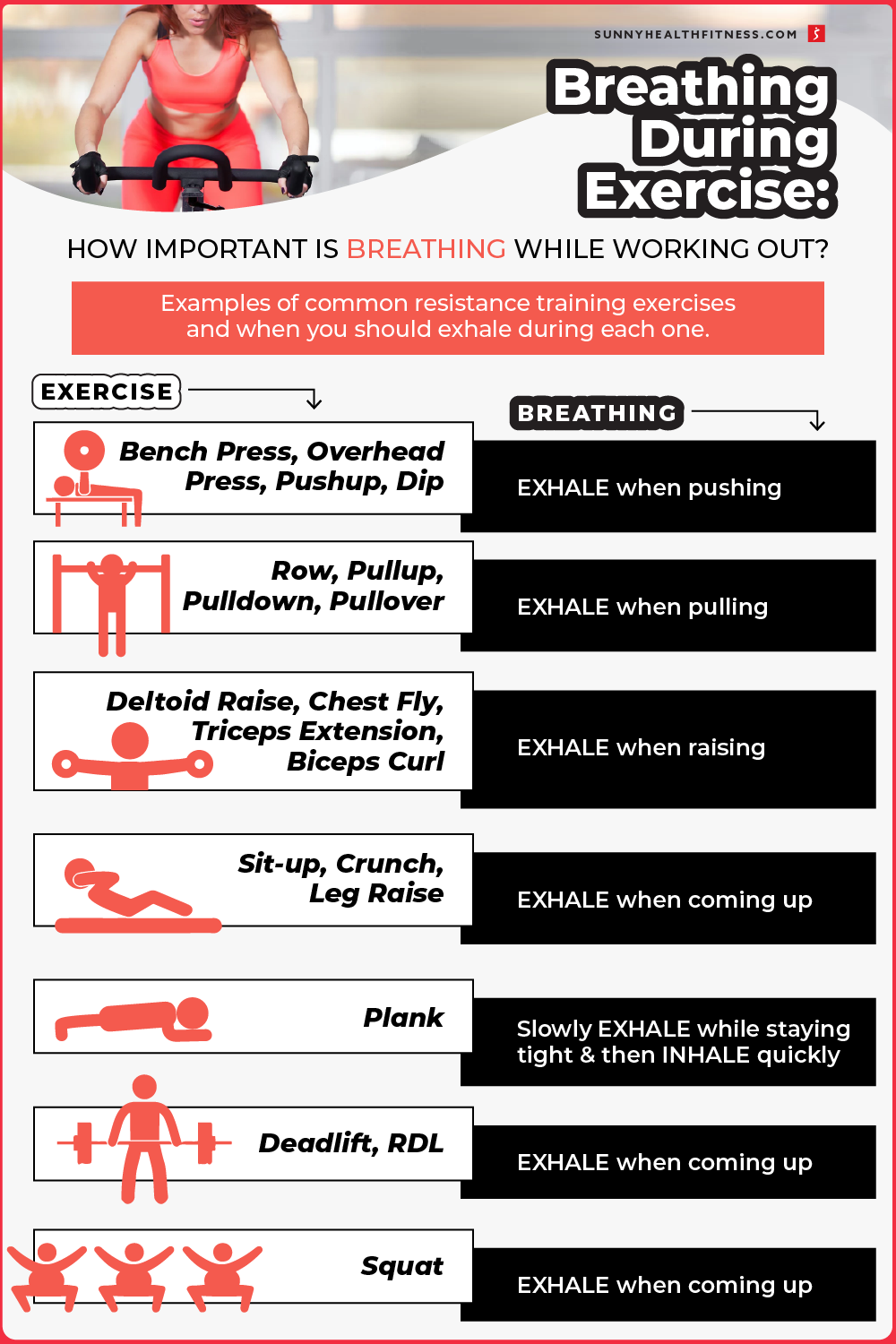
Recommended Products

